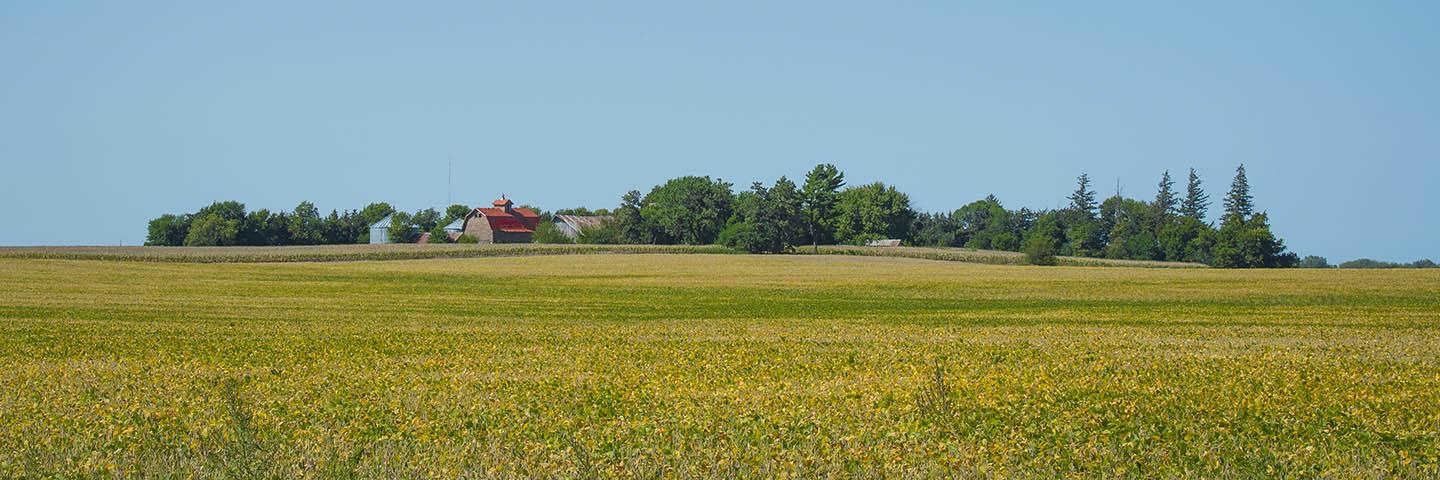
The Conservation Stewardship Program (CSP) helps you build on your existing conservation efforts while strengthening your operation.
The Conservation Stewardship Program (CSP) helps you build on your existing conservation efforts while strengthening your operation. Whether you are looking to improve grazing conditions, increase crop resiliency, or develop wildlife habitat, we can custom design a CSP plan to help you meet those goals. We can help you identify natural resource problems in your operation and provide technical and financial assistance to solve those problems or attain higher stewardship levels in an environmentally beneficial and cost-effective manner. For example, we can look at ways to address the amount of soil lost; mitigate the impact of excess water; reduce the contribution of agricultural operations to airborne soil particles and greenhouse gas emissions; improve the cover, food, and water available for domestic and wildlife species; or promote energy efficiencies for on-farm activities. If you are already taking steps to improve the condition of the land, chances are CSP can help you find new ways to meet your goals.
Benefits
CSP is for working lands. It is the largest conservation program in the United States. Thousands of people voluntarily enroll in the program because it helps them enhance natural resources and improve their business operation.
CSP participants are seeing real results. Some of these benefits include:
- Enhanced resiliency to weather and market volatility
- Decreased need for agricultural inputs
- Improved wildlife habitat conditions
New CSP Grasslands Conservation Initiative
This new initiative assists producers in protecting grazing land uses; conserving and improving soil, water and wildlife resources; and achieving related conservation values by conserving eligible land through grassland conservation contracts. Eligible lands are limited to cropland for which base acres have been maintained under FSA’s ARC/PLC and were planted to grass or pasture, including idle or fallow, during a specific period. Enrolled acreage must be managed consistently with a grassland conservation plan. Producers will have a single opportunity to enroll eligible land in a five-year contract.
Wyoming sub-accounts for General Sign-up and Landscape Conservation Initiatives
Agricultural Land: Offered statewide. Land uses: Cropland, Pasture, Rangeland, Associated Ag Land, and Farmstead
Non-Industrial Private Forestland: Offered statewide. Land uses: Forest, Associated Ag Land, and Farmstead
Landscape Conservation Initiative – Working Lands for Wildlife – SGI:
Offered statewide. Land uses: Cropland, Pasture, Rangeland, Associated Ag Land, and Farmstead.
Organic:
Offered statewide. Land uses: Cropland, Pasture, Rangeland, Associated Ag Land, and Farmstead.
In addition, the program provides opportunities for beginning farmers and ranchers and socially disadvantaged producers. Nationally, the program aims to enroll at least five percent of total program acres operated by beginning farmers and ranchers and another five percent operated by socially disadvantaged producers. Beginning farmers and ranchers and socially disadvantaged producers will have a separate statewide funding pool. For additional information, visit the Socially Disadvantaged, Beginning, and Limited Resource Farmers/Ranchers website.
Ready to get started?
Contact your local service center to start your application.
How to Get Assistance
Do you farm or ranch and want to make improvements to the land that you own or lease?
Natural Resources Conservation Service offers technical and financial assistance to help farmers, ranchers and forest landowners.

To get started with NRCS, we recommend you stop by your local NRCS field office. We’ll discuss your vision for your land.
NRCS provides landowners with free technical assistance, or advice, for their land. Common technical assistance includes: resource assessment, practice design and resource monitoring. Your conservation planner will help you determine if financial assistance is right for you.
We’ll walk you through the application process. To get started on applying for financial assistance, we’ll work with you:
- To fill out an AD 1026, which ensures a conservation plan is in place before lands with highly erodible soils are farmed. It also ensures that identified wetland areas are protected.
- To meet other eligibility certifications.
Once complete, we’ll work with you on the application, or CPA 1200.
Applications for most programs are accepted on a continuous basis, but they’re considered for funding in different ranking periods. Be sure to ask your local NRCS district conservationist about the deadline for the ranking period to ensure you turn in your application in time.
As part of the application process, we’ll check to see if you are eligible. To do this, you’ll need to bring:
- An official tax ID (Social Security number or an employer ID)
- A property deed or lease agreement to show you have control of the property; and
- A farm number.
If you don’t have a farm number, you can get one from USDA’s Farm Service Agency. Typically, the local FSA office is located in the same building as the local NRCS office. You only need a farm number if you’re interested in financial assistance.
NRCS will take a look at the applications and rank them according to local resource concerns, the amount of conservation benefits the work will provide and the needs of applicants. View Application Ranking Dates by State.
If you’re selected, you can choose whether to sign the contract for the work to be done.
Once you sign the contract, you’ll be provided standards and specifications for completing the practice or practices, and then you will have a specified amount of time to implement. Once the work is implemented and inspected, you’ll be paid the rate of compensation for the work if it meets NRCS standards and specifications.

